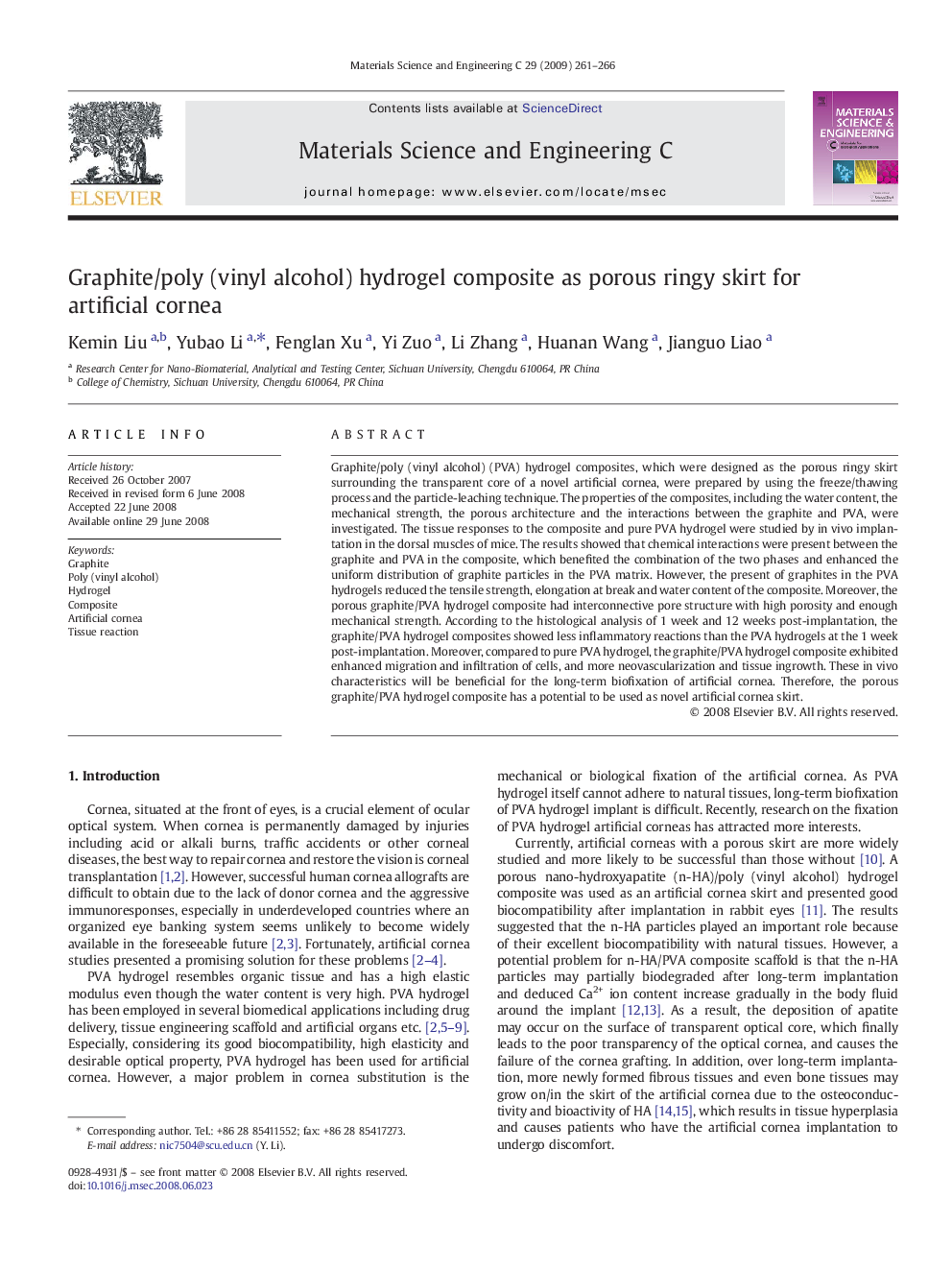| Article ID | Journal | Published Year | Pages | File Type |
|---|---|---|---|---|
| 1430507 | Materials Science and Engineering: C | 2009 | 6 Pages |
Graphite/poly (vinyl alcohol) (PVA) hydrogel composites, which were designed as the porous ringy skirt surrounding the transparent core of a novel artificial cornea, were prepared by using the freeze/thawing process and the particle-leaching technique. The properties of the composites, including the water content, the mechanical strength, the porous architecture and the interactions between the graphite and PVA, were investigated. The tissue responses to the composite and pure PVA hydrogel were studied by in vivo implantation in the dorsal muscles of mice. The results showed that chemical interactions were present between the graphite and PVA in the composite, which benefited the combination of the two phases and enhanced the uniform distribution of graphite particles in the PVA matrix. However, the present of graphites in the PVA hydrogels reduced the tensile strength, elongation at break and water content of the composite. Moreover, the porous graphite/PVA hydrogel composite had interconnective pore structure with high porosity and enough mechanical strength. According to the histological analysis of 1 week and 12 weeks post-implantation, the graphite/PVA hydrogel composites showed less inflammatory reactions than the PVA hydrogels at the 1 week post-implantation. Moreover, compared to pure PVA hydrogel, the graphite/PVA hydrogel composite exhibited enhanced migration and infiltration of cells, and more neovascularization and tissue ingrowth. These in vivo characteristics will be beneficial for the long-term biofixation of artificial cornea. Therefore, the porous graphite/PVA hydrogel composite has a potential to be used as novel artificial cornea skirt.
